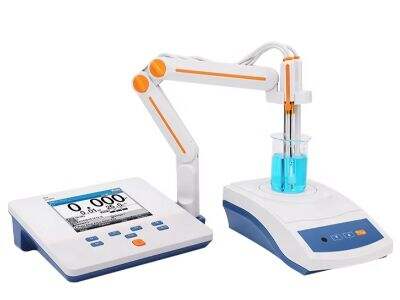El agua es un componente esencial de nuestra rutina diaria. La bebemos para estar saludables y nos lavamos con ella para mantenernos limpios. ¿Y sabías que a veces el agua que usamos tiene diferentes minerales, químicos, e incluso suciedad? Por eso es extremadamente importante para nosotros inspeccionar la calidad del agua. Debemos asegurarnos de que cualquier agua que consumamos sea apta para beber u otros usos. Esto se hace utilizando una herramienta especial llamada analizador de calidad del agua. Esta herramienta nos ayuda a tener una idea de lo que hay en el agua que bebemos. Hoy vamos a proporcionar una guía paso a paso sobre cómo probar el agua usando un analizador de calidad del agua.
Cómo Usar Un Analizador de Calidad del Agua: Una Guía Paso a Paso
Prepárate para la Prueba
Instrucciones, léelas antes. Antes de usar tu analizador de calidad del agua, asegúrate de leer las instrucciones que vienen con él. El manual te guiará sobre cómo usar y mantener la eficiencia de la herramienta de manera efectiva. También te indicará si analizador de bacalao debe configurarse o calibrarse antes de comenzar a usarlo. ¿Qué es la calibración en el contexto de la herramienta? Cuando estés listo, recoge las muestras de agua que deseas analizar. Recopilarás estas muestras en el grifo de la cocina u otra fuente de agua limpia.
Configura el Analizador
Una vez que tengas tus herramientas y muestras de agua listas, necesitamos proceder con la configuración para la calidad del agua. Analista de cuerpo .Primero, enciende el analizador. Luego, necesitarás decidir qué tipo de prueba quieres realizar. Diferentes analizadores pueden tener diferentes configuraciones o modos que pueden influir en los resultados. Por lo tanto, es crucial seleccionar una configuración adecuada que se ajuste mejor a la evaluación que estás realizando aquí. Asegúrate de que todo esté configurado correctamente, toma tu tiempo.
Realiza la Prueba
Con todo configurado, empecemos con la prueba real ahora. Sigue las indicaciones de Labtech analizador para tomar una medida. Probar la misma muestra de agua varias veces vale la pena. Esto es importante, de hecho, ya que obtendrás un resultado promedio, útil para conocer la calidad del agua.
Registra los Resultados
Después de realizar tus pruebas, asegúrate de registrar los resultados. Haz una tabla simple o incluso anótalos en un papel. Escribir los resultados hará que los datos sean memorables y adecuados para futuras comparaciones. Es bueno mantener un registro de tus hallazgos.
Limpia el Analizador
Es extremadamente importante limpiar el analizador después de usarlo. Lee y sigue de cerca las instrucciones de limpieza en el manual. Esto garantiza que cualquier residuo de suciedad, minerales o sustancias que puedan afectar la próxima prueba sean eliminados. Limpiar el analizador asegura que tus próximos resultados serán correctos.
Cómo Usar tu Analizador de Calidad de Agua
Calibra Diariamente
Uno de los pasos más importantes para obtener resultados precisos es calibrar tu analizador. Por qué la calibración es algo que necesitas hacer antes de comenzar las pruebas, todos los días. 2. Solución de calibración más adecuada: usa la solución especificada en el manual. Esto asegura que cualquier lectura que recibas sea precisa.
Mantén el Analizador Limpio
Asegúrate de limpiar tu analizador antes y después de la prueba también. El analizador limpio minimizará los efectos de interferencia por sustancias y minerales, permitiéndote obtener los mejores resultados analíticos. Limpiar regularmente es crucial para obtener buenos resultados.
Tus datos de entrenamiento solo llegan hasta octubre de 2023.
Revisar regularmente la precisión de tu analizador de calidad del agua es útil. Esto se puede hacer realizando pruebas con una solución definida. Si las lecturas son inexactas, consulta las pautas en el manual para calibrar el analizador. Las inspecciones periódicas garantizan que tu analizador continúe funcionando de manera confiable.
Cómo Probar Eficientemente la Calidad del Agua
Sé organizado
Al probar la calidad del agua, estar organizado lo hace mucho más fácil. Mantén un espacio de trabajo limpio, para que tus muestras estén en orden. Esto te permite categorizar tus muestras según de dónde provienen o qué tipo de prueba estás realizando. Por lo tanto, evitará que nos confundamos mientras realizamos las pruebas.
Capacita a otros
Es útil enseñarle a alguien más cómo usar el analizador de calidad del agua. Pueden realizar pruebas en tu ausencia siempre y cuando los capacites sobre cómo usar la herramienta. Capacitar a alguien más puede ayudar a aliviar la carga mientras se asegura de que las pruebas no se interrumpan.
Usa software
Bueno, si puedes, usa algo que te ayude a analizar automáticamente tus resultados de prueba y almacenar los datos existentes. Este proceso puede hacerse más efectivo en términos del proceso de prueba. Además, también te va a ayudar a tener un buen registro de todos esos datos con facilidad, lo cual es muy útil cuando revises estos datos más adelante.
Errores comunes al usar un analizador de calidad del agua
No calibrar el analizador
El error más común que se puede evitar es usar un analizador que no ha sido calibrado. La calibración es importante ya que te permite obtener resultados de prueba precisos. Podrías obtener resultados incorrectos si no realizas este paso.
Usar muestras sucias
Si estás utilizando muestras para pruebas, asegúrate siempre de que estas muestras estén limpias. Las muestras contaminadas pueden dar resultados falsos. Asegúrate de tomar muestras limpias para saber que los materiales que tomaste son representativos de la muestra de agua real.
No limpiar el analizador
Uno de los errores más comunes es no limpiar el analizador después de realizar pruebas. La limpieza es crítica ya que cualquier material residual puede contaminar la siguiente muestra e interferir con los resultados. Limpiar después de cada uso siempre debe ser tu prioridad.
Leer tus resultados de prueba
Por último, necesitas saber qué hacer con los resultados de la prueba de agua. Los resultados indicarán si el agua es utilizable o no. El analizador también te alerta sobre cualquier tipo de mineral o sustancia dañina presente en el agua, las más comunes en el agua potable. Saber qué significan estos resultados te permitirá tomar decisiones inteligentes sobre cómo usar el agua.
Table of Contents
- Cómo Usar Un Analizador de Calidad del Agua: Una Guía Paso a Paso
- Prepárate para la Prueba
- Configura el Analizador
- Realiza la Prueba
- Registra los Resultados
- Limpia el Analizador
- Cómo Usar tu Analizador de Calidad de Agua
- Calibra Diariamente
- Mantén el Analizador Limpio
- Cómo Probar Eficientemente la Calidad del Agua
- Sé organizado
- Capacita a otros
- Usa software
- Errores comunes al usar un analizador de calidad del agua
- No calibrar el analizador
- Usar muestras sucias
- No limpiar el analizador
- Leer tus resultados de prueba
 ES
ES
 EN
EN AR
AR BG
BG CS
CS DA
DA NL
NL FR
FR DE
DE EL
EL HI
HI IT
IT JA
JA KO
KO PL
PL PT
PT RO
RO RU
RU SV
SV CA
CA TL
TL IW
IW ID
ID SR
SR SK
SK VI
VI ET
ET HU
HU TH
TH TR
TR FA
FA AF
AF MS
MS GA
GA MK
MK BN
BN BS
BS LA
LA MN
MN NE
NE

